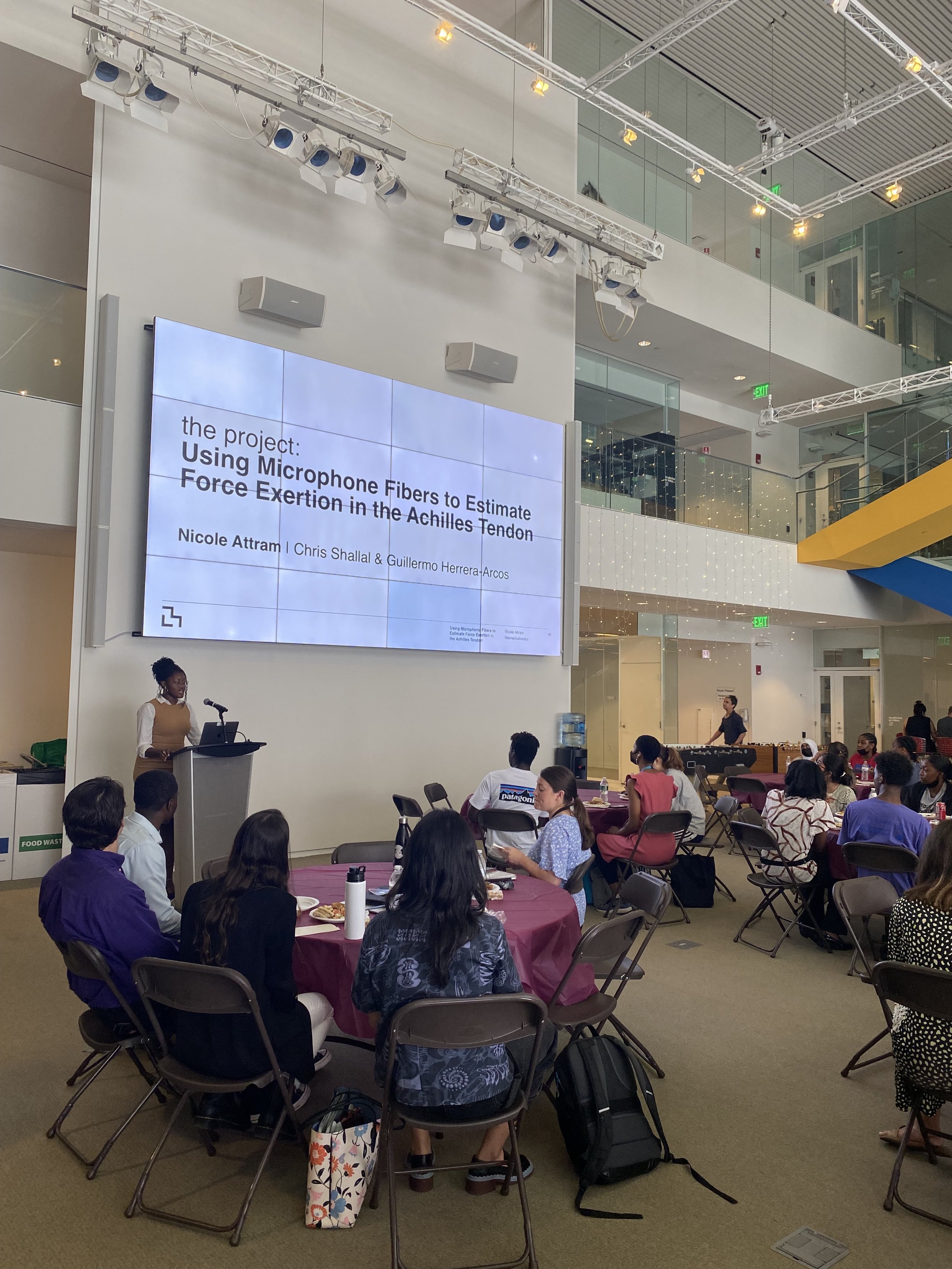MIT MEDIA LAB BIOMECHATRONICS GROUP
Exoskeletons are a form of assistive technology that not only return lower limb control to patients but also improve gait. Microphone fibers can noninvasively provide real-time data from the body to drive an exoskeleton and return human-like mobility control to patients.
Utilizing Microphone Fibers to Map Force from Calcaneal Tendon Vibrations Project Hypothesis




During the summer of 2022, at MIT Media Lab’s Biomechatronics Group under Dr. Hugh Herr, I researched ways to correct gait irregularities in patients with lower limb impairments. I aimed to use microphone fibers to continuously record Achilles tendon vibration and calculate force to ultimately drive an exoskeleton in real-time. This would enable an exoskeleton to successfully compensate for any gait irregularities and adapt to an individual’s unique needs regardless of the terrain. By the end of the summer, I identified a distinct frequency with the assistance of a tendon-tapping device. During this experience, I expanded my repertoire of research strategies through prototype design and experimentation, honing my AutoCAD, 3D printing, and soldering skills. Most importantly, I saw the impact of assistive technology on the lives of lower-limb amputees. I talked to patients and through their stories, I saw their wonder upon regaining mobility. It inspired me not only to continue this work but ensure that cutting-edge medical interventions were also available to underserved communities.
MIT Summer Research Program
I presented my findings before faculty and fellow peers at the Biomechatronics Intern Presentation, the Media Lab Summer Intern Presentation (pictured above), and the MSRP Final Symposium. I also presented before judges as an Oral Presenter and Travel Awardee at the Annual Biomedical Research Conference for Minority Scientists in Anaheim, California in November 2022.

